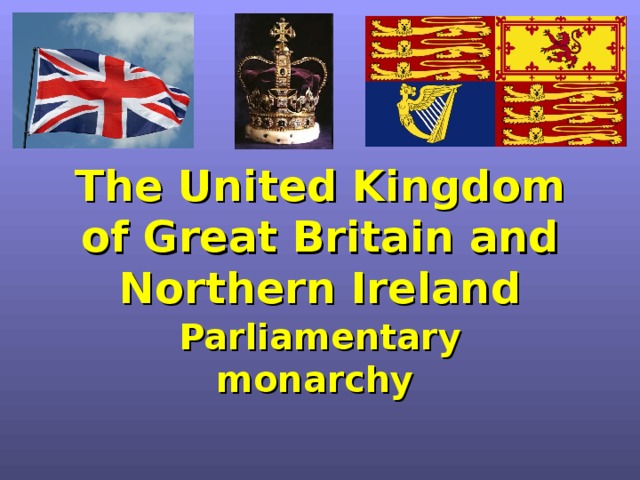
The United Kingdom of Great Britain and Northern Ireland
Parliamentary monarchy

British Parliament
(The World’s Oldest Democracy)

Houses of Parliament. View from the Thames across Westminster bridge
The State System of any nation is a product of a national spirit, political mentality and the consciousness of people, work of many centuries. The United Kingdom of Great Britain and Northern Ireland is a unitary state under a constitutional monarchy.

Her Royal Majesty Elizabeth II , Queen of the UK
This means that it has a monarch as its Head of State.

HM Armed Forces
Everything in Britain today is done in the Queen’s name. It is her armed forces, as the armed forces of the United Kingdom, are known as Her Majesty's Armed Forces or sometimes legally the Armed Forces of the Crown.
The tri-service badge

Service branches
Royal Navy Ensign
Everything in Britain today is done in the Queen’s name. It is her armed forces, as the armed forces of the United Kingdom, are known as Her Majesty's Armed Forces or sometimes legally the Armed Forces of the Crown. They encompass the Royal Navy, the British Army, and the Royal Air Force.
British Army
Royal Air Force

Her Majesty's Postal Service Box
Logo of Her Majesty's Government
There is her Postal Service, her Government and what not.

Her Majesty the Queen congratulates the newly appointed (though elected) Prime Minister David Cameron (Conservative Party)
She appoints all the Ministers, including the Prime Minister (though elected).

The Queen Attends The State Opening of Parliament
However, everything is done on the advice of the elected Government, and the monarch takes no part in the decision-making process. The British say that their “monarchs reign, but not rule”. Officially the monarch reigns with the support of Parliament.
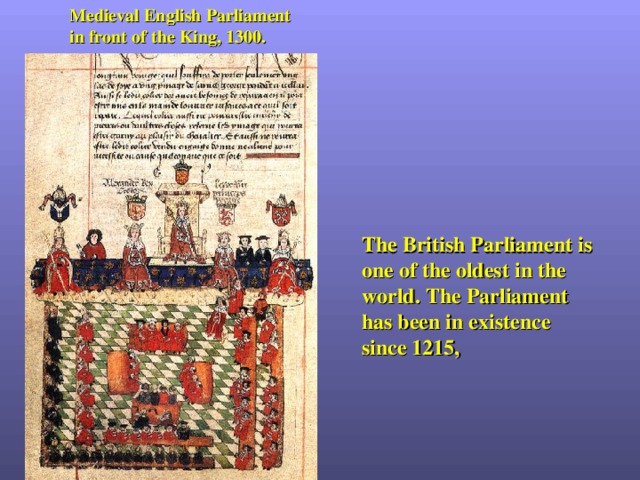
Medieval English Parliament in front of the King, 1300.
The British Parliament is one of the oldest in the world. The Parliament has been in existence since 1215,

John of England signs Magna Carta Illustration from Cassell's “History of England” (1902)
when King John signed the Magna Carta. The Magna Carta (Charter) was the first document forced onto an English King by a group of his subjects (the barons) in an attempt to limit his powers by law and protect their privileges.
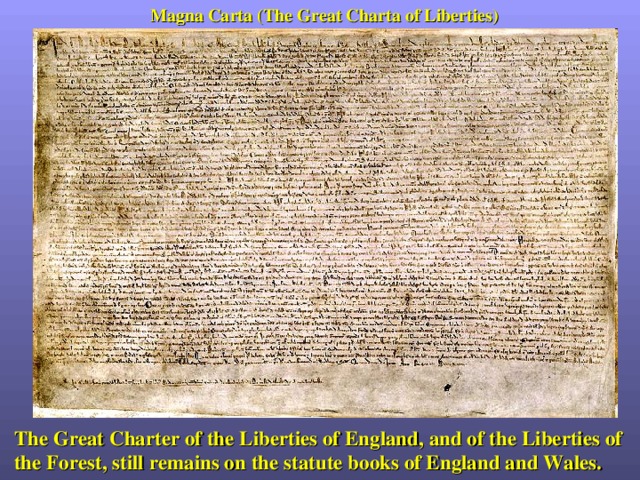
M agna Carta (The Great Charta of Liberties)
The Great Charter of the Liberties of England, and of the Liberties of the Forest, still remains on the statute books of England and Wales.
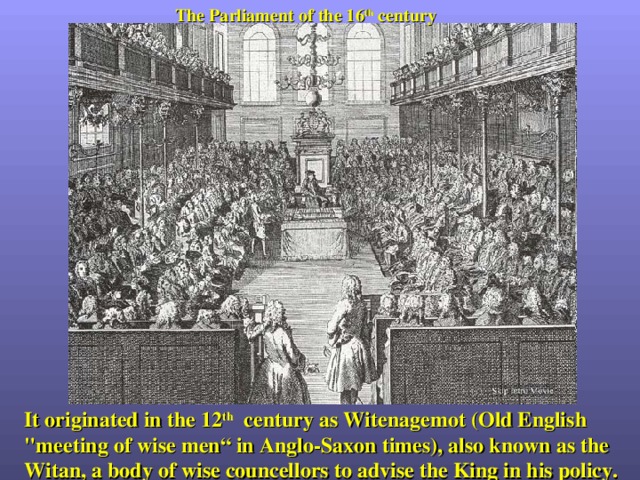
The Parliament of the 16 th century
It originated in the 12 th century as Witenagemot (Old English "meeting of wise men“ in Anglo-Saxon times), also known as the Witan, a body of wise councellors to advise the King in his policy.
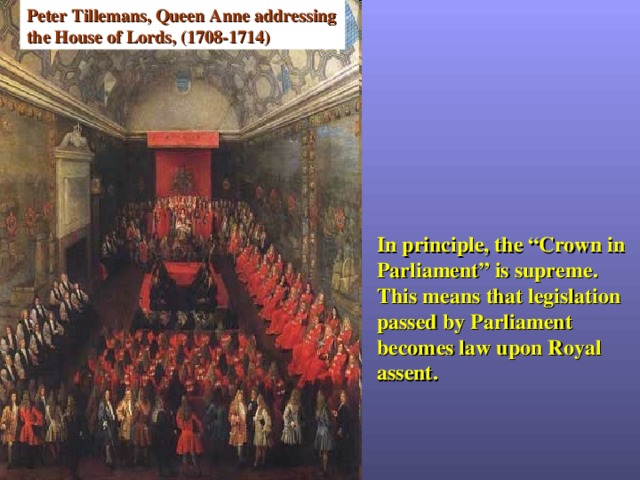
Peter Tillemans, Queen Anne addressing the House of Lords, (1708-1714)
In principle, the “Crown in Parliament” is supreme. This means that legislation passed by Parliament becomes law upon Royal assent.
Queen Elizabeth I and her Parliament.
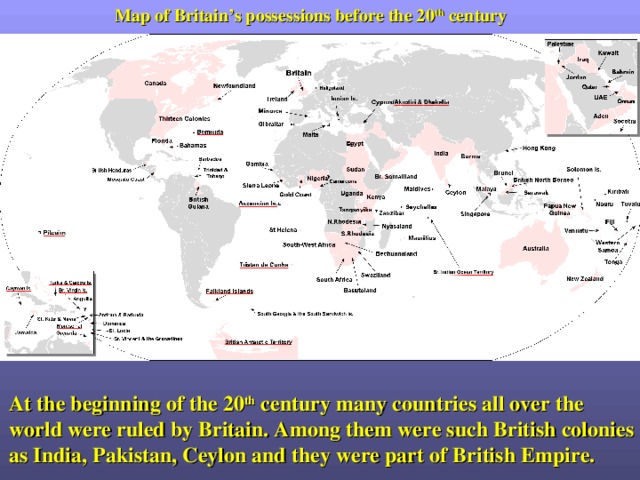
Map of Britain’s possessions before the 20 th century
At the beginning of the 20 th century many countries all over the world were ruled by Britain. Among them were such British colonies as India, Pakistan, Ceylon and they were part of British Empire.
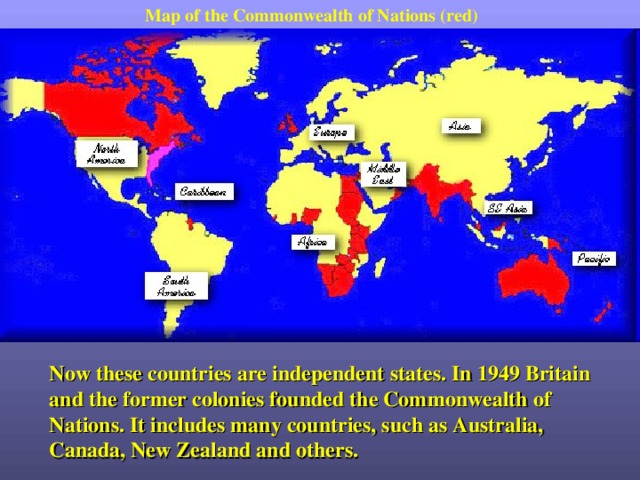
Map of the Commonwealth of Nations (red)
Now these countries are independent states. In 1949 Britain and the former colonies founded the Commonwealth of Nations. It includes many countries, such as Australia, Canada, New Zealand and others.
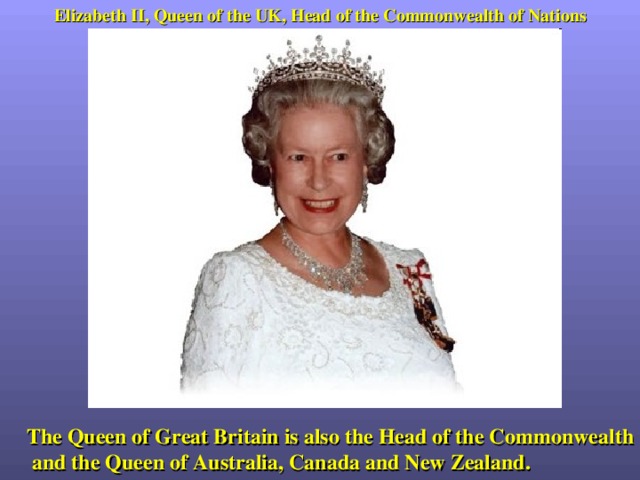
Elizabeth II, Queen of the UK, Head of the Commonwealth of Nations
The Queen of Great Britain is also the Head of the Commonwealth and the Queen of Australia, Canada and New Zealand.
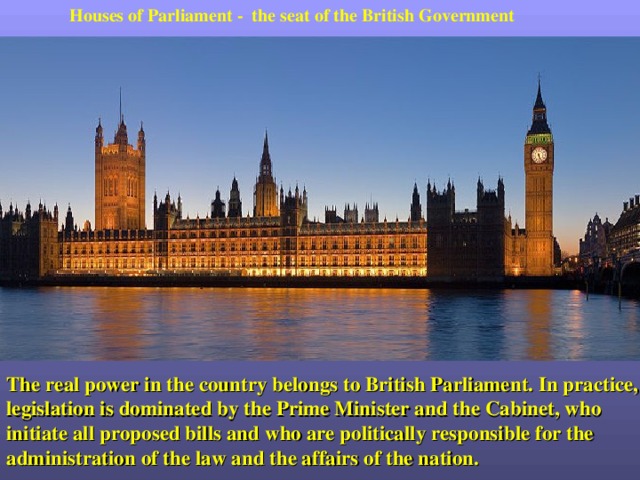
Houses of Parliament - the seat of the British Government
The real power in the country belongs to British Parliament. In practice, legislation is dominated by the Prime Minister and the Cabinet, who initiate all proposed bills and who are politically responsible for the administration of the law and the affairs of the nation.
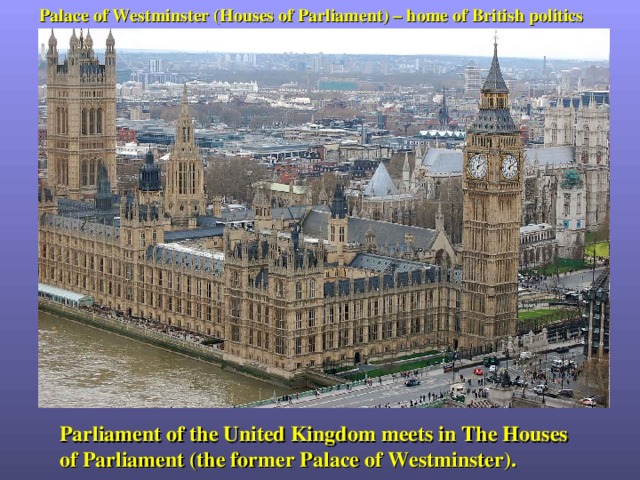
Palace of Westminster (Houses of Parliament) – home of British politics
Parliament of the United Kingdom meets in The Houses of Parliament (the former Palace of Westminster).
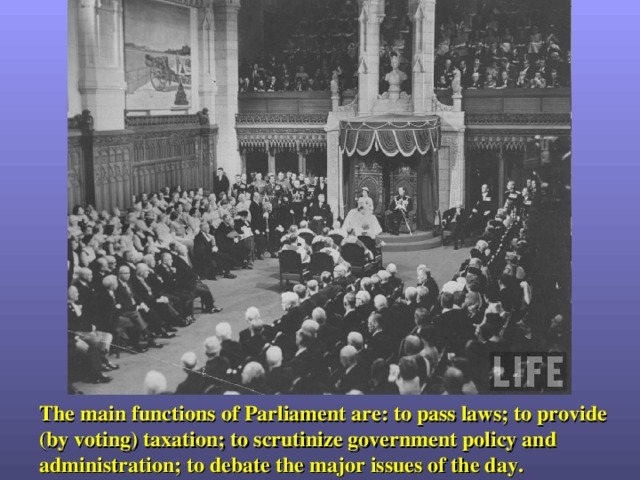
The main functions of Parliament are: to pass laws; to provide (by voting) taxation; to scrutinize government policy and administration; to debate the major issues of the day.
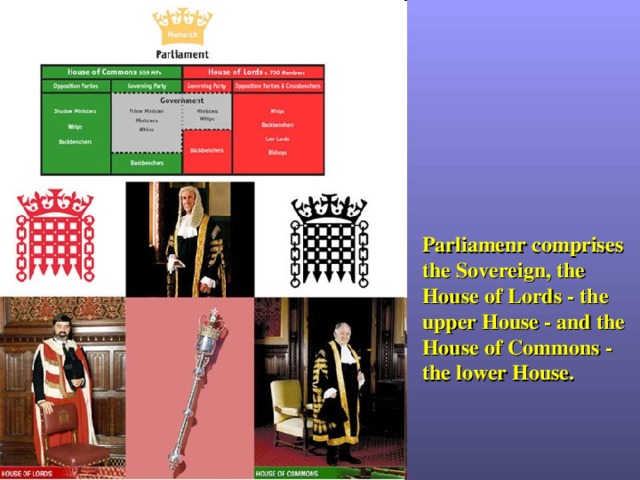
Parliamenr comprises the Sovereign, the House of Lords - the upper House - and the House of Commons - the lower House.
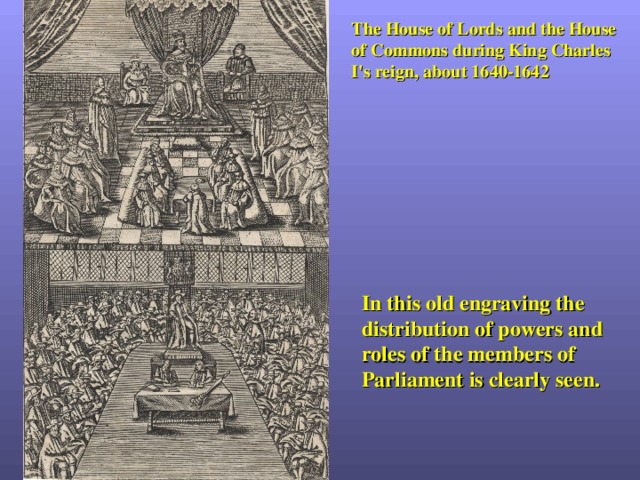
The House of Lords and the House of Commons during King Charles I's reign, about 1640-1642
In this old engraving the distribution of powers and roles of the members of Parliament is clearly seen.
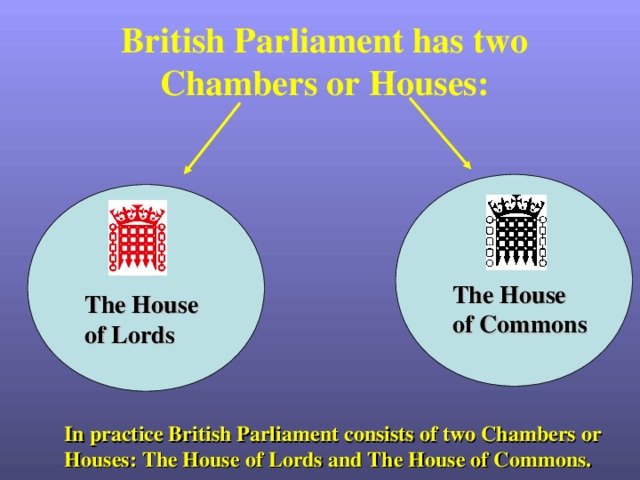
British Parliament has two Chambers or Houses:
The House of Commons
The House of Lords
In practice British Parliament consists of two Chambers or Houses: The House of Lords and The House of Commons.
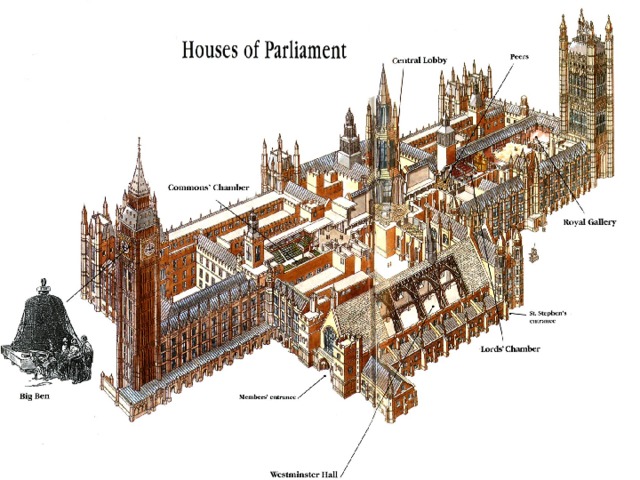
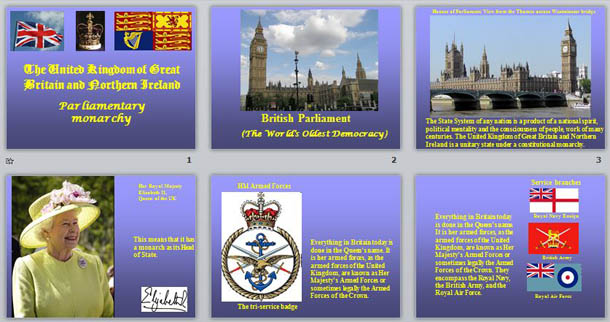

 Получите свидетельство
Получите свидетельство Вход
Вход

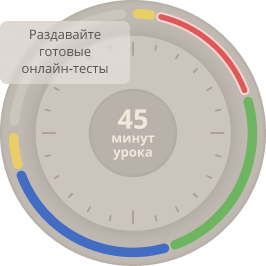



























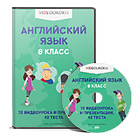
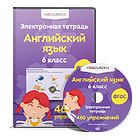

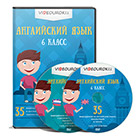
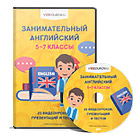
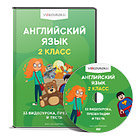
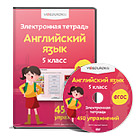
 Презентация по английскому языку "The United Kingdom of Great Britain and Northern Ireland. Parliamentary monarchy" (25.23 MB)
Презентация по английскому языку "The United Kingdom of Great Britain and Northern Ireland. Parliamentary monarchy" (25.23 MB)
 0
0 731
731 61
61 Нравится
0
Нравится
0


